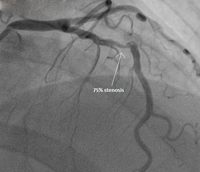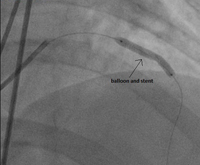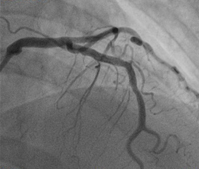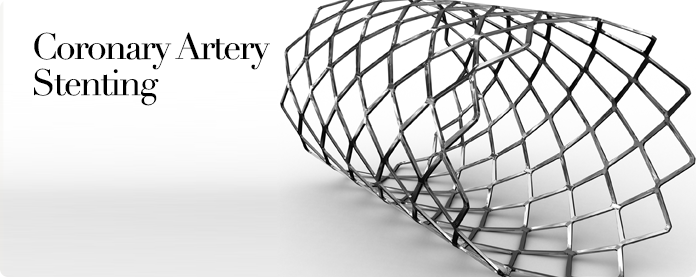| Coronary artery stenting is a procedure used to treat coronary artery stenosis. |
|
| A coronary stent is a tube-like piece of metal scaffolding which is implanted at the site of narrowing in a coronary artery to widen it. It is delivered to the site of narrowing through a coronary catheter which is inserted through an artery in the groin or wrist. In the factory packaging, the stent is wrapped around a tiny balloon catheter which is kept deflated. The balloon catheter is delivered to the site of narrowing and the balloon is inflated, thus expanding the stent. The stent adheres to the inner wall of the blood vessel. Over time, a layer of cells grow over the stent and cover it so that the stent becomes incorporated in to the artery wall. The stent is left permanently in the artery. |
|
| After the stenting procedure, the catheter is removed and pressure is exerted over the entry site in the groin or wrist until bleeding has stopped. A pressure bandage is applied, the patient is kept on bed rest for 4 to 6 hours, and his vital signs are monitored. If there are no complications, he may be discharged the next day. He may resume activities as advised by his cardiologist. He has to take two types of blood thinning medication to prevent a clot from forming at the site of the stent. He may stop one of the blood thinning medications only when his cardiologist advises him that it is safe to do so. Under no circumstances can he stop both the blood thinners without informing his cardiologist. |
|
| CORONARY ANGIOGRAM BEFORE STENTING |
|
 |
|
| INFLATION OF BALLOON AND STENT |
|
 |
|
| FINAL RESULT AFTER STENTING |
|
 |
|








